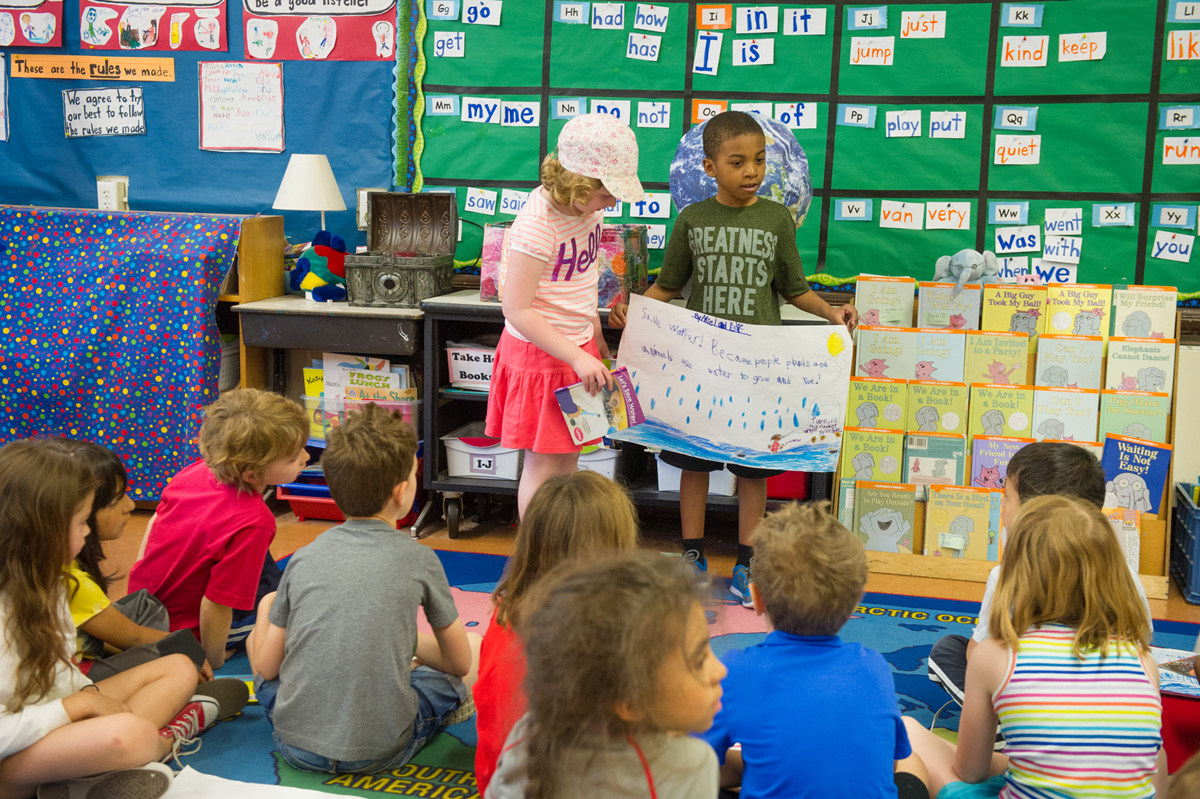Keeping Sharing Fresh

 In my conversations with teachers I hear a common concern about Morning Meeting at this time of year—how to move forward with sharing. Teachers have long lists of varied ideas for greeting and activity and are growing more comfortable with embedding academic content into their messages in ways that involve students and get them excited about learning. But sharing has stalled out.
In my conversations with teachers I hear a common concern about Morning Meeting at this time of year—how to move forward with sharing. Teachers have long lists of varied ideas for greeting and activity and are growing more comfortable with embedding academic content into their messages in ways that involve students and get them excited about learning. But sharing has stalled out.
Many teachers began the year with highly structured, around-the-circle sharing with teacher-chosen topics, to help students ease into sharing. This structure worked well at first and students participated eagerly—but now teachers are finding that students are getting tired of this routine. At the same time, teachers know from observations during the day that many students aren’t ready to make the leap to a more open, dialogue sharing structure. This is a great time to begin using structured partner sharing—a format in which two students sit face-to-face and take turns talking and listening in response to a teacher-generated question. This structure provides an effective bridge to dialogue sharing and can be used throughout the year to keep sharing varied, lively, and engaging.
Partner sharing gives students a chance to practice the key skills of speaking clearly and concisely, listening carefully, and responding appropriately to each other’s ideas and experiences—skills that are essential for successful dialogue sharing as well as for other kinds of academic conversations. It might also be a safer format for children who are reluctant to speak up in front of the larger group, helping them build confidence and find their voice.
Following are some tips for introducing partner sharing:
When first introducing partner sharing, consider assigning partners. Are you needing to work on class cohesiveness? Then pair students up who don’t know each other very well and give them a “getting to know you” topic, such as “What’s one thing you like to do after school?” Or you might consider pairing students who are interested in the same academic topic. For example, if the class is studying animal habitats, pair students who are both interested in animals of the tropics.
Teach, model, and practice new speaking and listening skills. In around-the-circle sharing, students will have gotten lots of practice in responding succinctly to a focus question or teacher-chosen topic. In partner sharing, you can build on this skill by having them respond with a main idea and two or three supporting details. For example, for a topic such as a favorite book character, the person sharing would name a character and give a few reasons why this character is their favorite.
Students have also had practice in listening respectfully to each other. Partner sharing offers an opportunity to teach them how to listen and then respond to another’s sharing with a question that elicits more information (“Does your favorite character remind you of someone you know?”) or a comment that connects to the sharer (“Sounds like you really admire this character’s bravery”). Again, teach, model, and practice each of these skills.
As students become comfortable with teacher-assigned partners, build in ways for them to talk with a variety of classmates. One such structure is Inside-Outside Circles sharing. Here’s how to set this up:
- Have everyone count off by 2s.
- Ask 1s to stand and form a circle, facing out.
- Ask 2s to form a circle facing in, so that each 2 partners with a 1.
- State a topic or ask a focus question (“What’s one intriguing thing you learned about mammals in yesterday’s science lesson?”). Each person shares a thought.
- At a signal, everyone stops talking.
- Give a new topic or focusing question. Direct one circle to move to the right so that everyone has a new partner. Discuss the new topic.
Carol Davis is a professional development designer at Center for Responsive Schools.
Tags: Listening Skills, Sharing